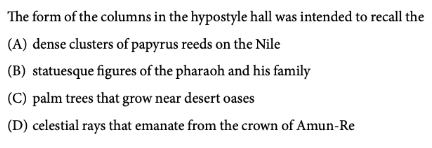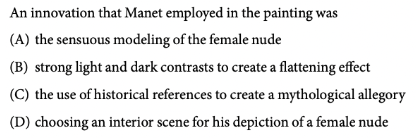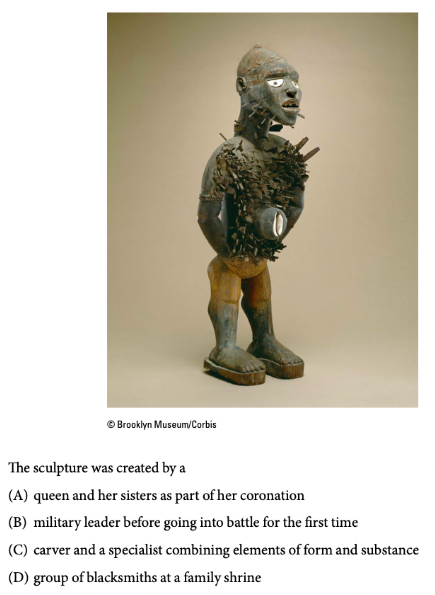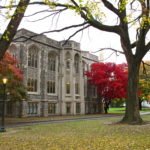10 Hardest AP Art History Questions
What’s Covered:
- How Will AP Scores Impact My College Chance
- Overview of the AP Art History Exam
- 10 Hardest AP Art History Questions
- Final Tips
The AP Art History Exam is very intimidating – after all, you’re expected to know over 200 different artworks! In 2021, only 54% of test-takers received a passing score, making this exam fairly difficult. In this article, we’ll cover what you need to know to pass this exam, along with some difficult practice problems for you to try!
How Will AP Scores Impact My College Chances?
Short answer: they don’t!
Your AP scores actually have no impact on your college chances. What admissions officers look for instead are the actual classes themselves. But, AP scores can still provide college credit or help you to place out of introductory courses (depending on the college).
If you want to see how your AP classes affect your admissions chances, try CollegeVine’s chancing engine! This free calculator takes into account factors like course rigor, test scores, GPA, extracurriculars and more to determine your chances at select schools.
Overview of the AP Art History Exam
The AP Art History Exam consists of two main sections, to be completed in three hours:
Section I: Multiple Choice (50% of exam score)
- 80 questions, 1 hour
Section II: Free Response (50% of exam score)
- 6 questions (2 long essays and 4 short essays), 2 hours
These questions are designed to test your knowledge of art history concepts and the contexts and surrounding works of art. You should also be able to analyze and compare over 200 different artworks! No supplementary materials are provided during the exam.
10 Hardest AP Art History Questions
All questions shown below are official AP practice questions.
Question 1
Answer: C
Question 2
Answer: B
Question 3
Answer: A
Question 4
Answer: B
Question 5
Answer: A
Question 6
Answer: B
Question 7
Answer: B
Question 8
Answer: B
Question 9
Answer: C
Question 10
Answer: C
Final Tips
1. Know the task verbs
According to CollegeBoard, each free response question will have a certain task verb which indicates what type of response you should be writing. Here are the different task verbs and what to do when you see them:
- Attribute: You’ll be expected to identify the artist, culture, art-historical style, or object type of an unknown work of art.
- Describe: You’ll need to describe the characteristics of a work of art
- Explain: You should be explaining how or why a certain phenomenon exists.
- Identify: You’ll need to give information, such as title, artist, culture, style, date or materials. You typically will not need to explain further.
- Justify attribution: You should justify the attribution of a work of art, with evidence.
2. Memorize context
The exam asks a lot about the context behind art. Make sure you have a strong grasp on the different historical art periods and geographies, including the defining features and styles. This way, even if you don’t remember a particular artwork, the time period or style can give you some clues as to where it might be from and who might have created it.
3. Practice, practice, practice!
Because this exam is so content heavy, it will definitely be beneficial to take as many practice exams as you can. Familiarizing yourself with the flow and format of the exam will make you much more comfortable on test day. Be sure to take note of which kinds of questions you miss often to determine whether there’s a specific time period that you might need to brush up on.
As you study for this exam, check out some of our other relevant articles:












